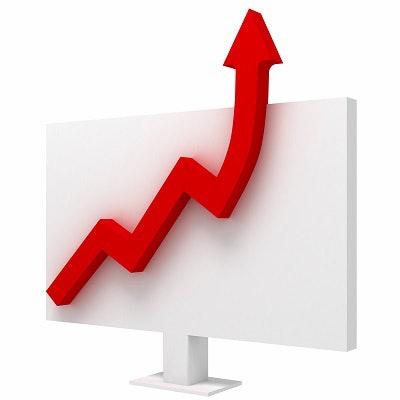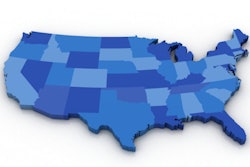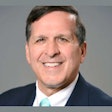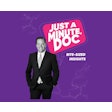
It's always an excellent idea for dentists and team members to know what numbers are making an impact on their practice's bottom line and to have some numbers from across the U.S. that they can use as a comparison to see how well, or not so well, they're really doing.
As IgniteDA co-founder Kevin Henry often reminds dentists and team members during our monthly webinars, you aren't just running a practice, you're actually running a small business. Knowing your numbers is a key part of keeping that business successful.
Sikka Software has just compiled data from more than 13,000 dental practices throughout the U.S. in more than 70 different categories within the practice. In this two-part series, I've looked at 10 key metrics and boiled down the nationwide averages for the last seven years. Part 1 will examine aspects of hygiene, preventive, and doctor production along with the number of active patients.
Let's look at those five numbers, what the seven-year trends are indicating, and what the numbers might be telling us.
Hygiene production
Let's look at both scheduled and net hygiene production.
| Hygiene scheduled production per month | |
| 2010 | $9,571.11 |
| 2011 | $9,719.78 |
| 2012 | $9,089.40 |
| 2013 | $9,217.99 |
| 2014 | $9,385.04 |
| 2015 | $9,743.48 |
| 2016 | $10,081.50 |
| 2017 | $10,614.23 |
Hygiene scheduling numbers have gone up the last three years. That's a good sign that patients are starting to understand once again the importance of those six-month checkups.
How is your practice communicating the importance of these checkups to your patients? How are you making sure your hygiene appointments are actually scheduling their next appointments before they leave the practice?
| Hygiene net production per hour | |
| 2010 | $77.40 |
| 2011 | $70.14 |
| 2012 | $58.58 |
| 2013 | $62.14 |
| 2014 | $62.27 |
| 2015 | $61.32 |
| 2016 | $63.61 |
| 2017 | $61.99 |
Following up on the points suggested after monthly hygiene scheduled production, 2017's numbers dipped a bit from 2016, which had reached their highest points since 2011. While there isn't a lot of difference over the last five years, it's still a marked drop from earlier in the decade when the average was above $70 per hour.
Are you giving your hygienists enough time with every patient to provide optimal care while in the chair?
| Doctor net production per hour | |
| 2010 | $251.31 |
| 2011 | $233.43 |
| 2012 | $191.35 |
| 2013 | $191.66 |
| 2014 | $195.04 |
| 2015 | $205.57 |
| 2016 | $216.24 |
| 2017 | $222.69 |
After a sharp drop between 2011 and 2012, doctor net production continues its upward climb. That's good news for every dentist out there, but there is still work to be done to get back to levels from earlier in the decade.
Much of these numbers are dependent on the effectiveness of your case presentation skills. How are you ensuring your patients come back to your practice for the treatment they need? Are you asking the right questions and giving them reasons to schedule, such as the availability of third-party financing?
| Active patients (visited a practice in last 18 months) |
|
| 2010 | 2,194.4 |
| 2011 | 2,206.9 |
| 2012 | 2,213.5 |
| 2013 | 2,231.5 |
| 2014 | 2,251.9 |
| 2015 | 2,335.3 |
| 2016 | 2,403.8 |
| 2017 | 2,161.8 |
Many practices like to make sure their patients see them every six months. How are you ensuring your active patients stay active?
We often hear doctors bragging about their new patient numbers, but make sure you're treating your existing patient base like the kings and queens they are. Without repeat customers and raving fans, it's tough for any business of any kind, including your dental practice, to grow and prosper.
Preventive production
| Preventive production per month | |
| 2010 | $14,199.35 |
| 2011 | $14,480.12 |
| 2012 | $14,686.31 |
| 2013 | $15,039.14 |
| 2014 | $15,648.33 |
| 2015 | $16,405.55 |
| 2016 | $16,494.62 |
| 2017 | $16,287.67 |
Taking information from 17 different codes, we were able to look at exactly how much production comes from preventive procedures in an average month. Many dental practices pride themselves on being "preventive." How are you making sure your practice is doing this?
Part of that includes taking the word "watch" out of your clinical vocabulary. Make sure you're doing what's in the best interest of your patient, even if your schedule seems a bit crazed at the moment. If patients need a procedure, use your communication skills to help them understand the reasoning behind it and that you are putting their health above all else.
Part 2 of this series will discuss gross production per assistant, monthly periodic exams, and more.
Alitta Boechler is the director of digital marketing at Sikka Software. You can email her at [email protected]. Get a head start on 2018 with a free 10-procedure fee survey for your ZIP code from the app Practice Mobilizer at www.practicemobilizer.com. The full fee survey with more than 600 procedures for three ZIP codes can be purchased at store.sikkasoft.com.
Please note that the data should be used for comparison only.
The comments and observations expressed herein do not necessarily reflect the opinions of DrBicuspid.com, nor should they be construed as an endorsement or admonishment of any particular idea, vendor, or organization.



















